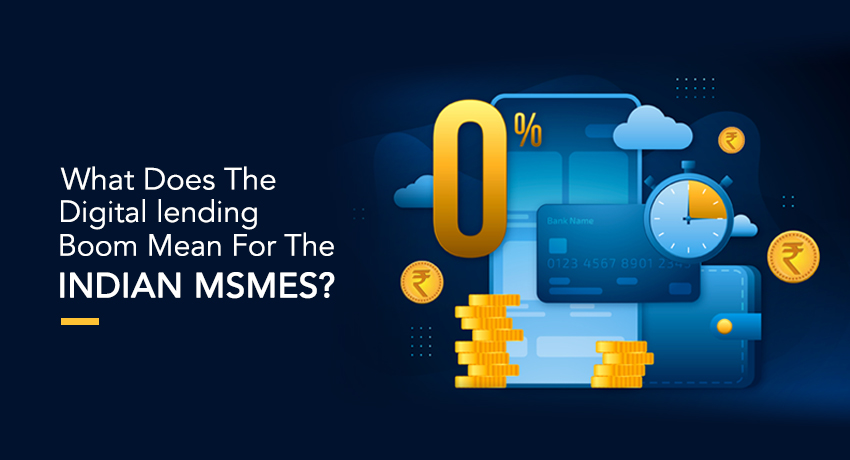The Micro, Small, and Medium-Sized Enterprises (MSMEs) in India will be significantly impacted by the surge in digital lending. MSMEs are essential to the Indian economy and make a substantial contribution to job creation and general economic expansion.
Over the past few years, MSMEs’ use of Internet payments has increased by 50–100%. According to a Global Findex Report, In India, only 8% of people borrowed money through official sources.
Over the past five years, the Reserve Bank of India (RBI) has made great progress since creating a robust framework to oversee digital lending. India’s Fintechs have been able to thrive due to the solid payment structure governed by the government, which has led to an increase in bank account openings—more than 50% of which are attributable to Fintech.
Growth of Digital Lending and its Effect on Indian MSMEs:
The MSME sector has improved as a result of the RBI’s support for sandboxes to foster innovation in the MSME sector and NITI Aayog’s promotion of digital banking for Indian companies.
Statistics show that one of India’s fastest-growing Fintech industries is digital lending. By 2030, the book size of Indian digital lending firms is anticipated to climb from USD 38.2 billion in 2021 to roughly USD 515 billion, with a 33.5% increase in CAGR. Some effects that digital lending has had on Indian MSMEs include the following:
- Several digital lending software, including Lending Kart, Cash Suvidha, Namaste Credit, and Flexiloans, have found new markets because of digital lending. The post-pandemic atmosphere has also permitted MSMEs to include online lending platforms in their systems to achieve credit standards. The firms were in desperate need of loans made available by the accessibility of digital financing when the demand for MSMEs in India decreased in the years 2020–21. The Indian MSMEs could then build up their resources and utilize the technology.
- Local and in-person lenders typically only provide loans to MSMEs with the requirement of collateral, which is a cause of concern for MSMEs, particularly those with lower turnovers. To solve this issue and provide loans without collateral, contemporary start-ups have impacted cutting-edge technology like machine learning and artificial intelligence.
- Without having to contact banks for loans frequently, loan offers can be sent via digital lending software from anywhere in the world to a large number of vendors. The loan process in the digital age significantly improves the effectiveness of MSMEs’ support systems.
According to a number of study surveys, 60–80% of Indian MSMEs now sell their products and accept payments online. All Indian MSMEs now need to use technology, whether it be for bookkeeping, digital transactions, or accounting, and the pandemic has accelerated this demand. According to the annual report of the Ministry of MSME for 2020–21, India is home to about 6.33 crore MSMEs, all of which make significant contributions to the GDP, employment, and economy of the nation. It is therefore plausible to predict that MSMEs will, over time, adopt secured technological software to facilitate financial transactions, which will ultimately spur efficiency and advancement in general.
